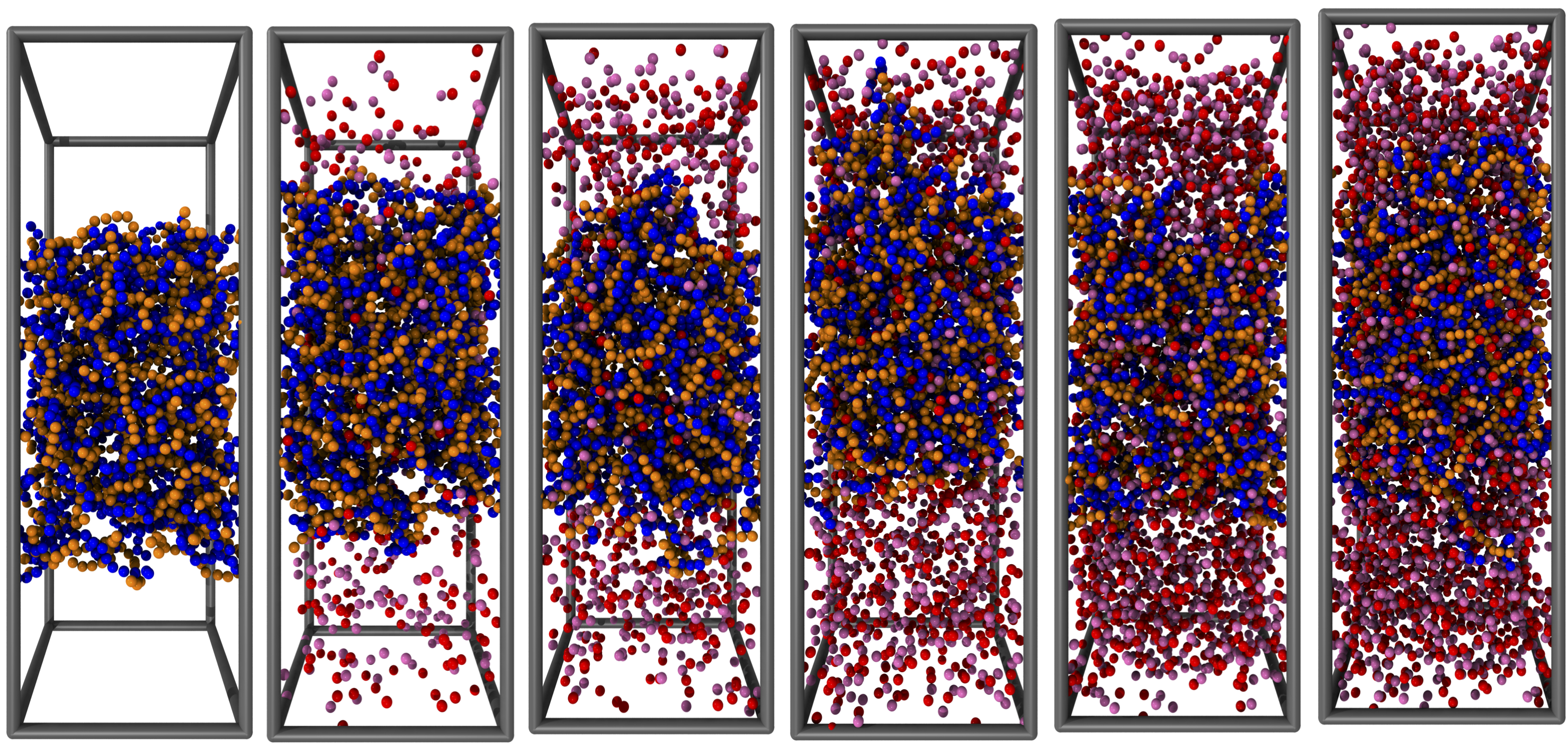
Charged Polymer Systems and Sequence-Defined Polymers
Charged polymers are used in a wide array of applications, ranging from viscosity modification and encapsulation in food products to advanced stimuli-responsive materials. Charged polymers are also ubiquitous in biological materials – most biomacromolecules are charged, which is a crucial aspect of their function. Understanding the physical properties of these systems is thus profoundly important to developing new materials that harness the features of complex biological systems (hierarchical structure, defined monomer sequences, etc.) for the wide array of applications that already feature charged polymers (and more!).
We are interested in a variety of charged polymer materials, in particular a class of polyelectrolyte solutions known as complex coacervates. We are using a combination of simulation and theory to understand the role of charge correlations, molecular shape, polymer monomer sequence, high charge densities, and chain architecture in affecting macroscopic electrostatically-driven phase separation. Our work has revealed new ways to manipulate and tune materials using charges. We are pioneering new ways to use polymers and charges to develop materials capable of emulating biology and relevant to applications ranging from advanced stimuli-responsive systems to materials for energy applications. This work is done in close collaboration with Prof. Sarah Perry at UMass Amherst.
One promising area we have been exploring is the use of monomer sequence to tune thermodynamic phase behavior, with the goal of encoding polymer chains with information that can govern macro- and micro-phase separation. To this end, we have been developing new theory and simulation methods capable of resolving both local sequence information and polymer conformation/self-assembly.
Systems comprised of oppositely-charged polymers can undergo liquid-liquid phase separation to form polymer-dense ‘complex coacervate’ phases. This is an emerging motif used in self-assembled materials, and has relevance to intracellular structures known as biomolecular condensations. We use a combination of simulation and theory (left) to demonstrate how coacervate phase behavior (right) is affected by molecular structure.

(a) We have used both simulation and theory to understand how precisely-defined monomer sequences affect coacervate phase behavior. (b) We can also show how blocky charged polymers can undergo solution self-assembly, driven by electrostatic attraction between oppositely-charged chains.

We simulate coacervates using a variety of approaches, to capture phase behavior and other material properties. Here, we use a full MD simulation that is consistent with more coarse-grained simulation and theoretical approaches developed in our group.
